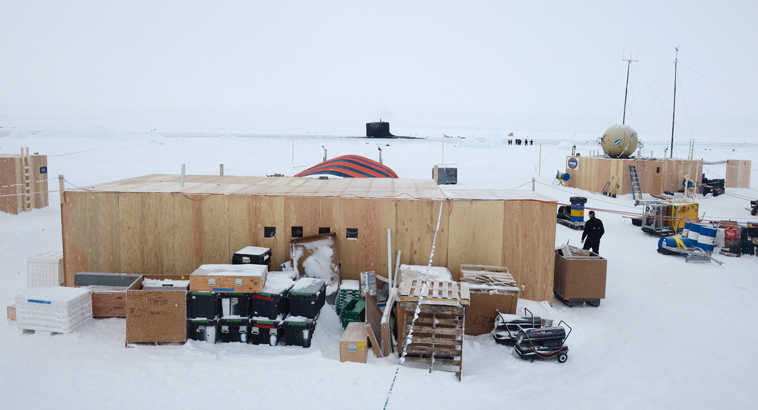ANCHORAGE — Cracks in polar sea ice north of Alaska will force the closing of an ice camp supporting a Navy submarine exercise, the Navy announced Monday.
Ice Exercise 2014 will continue but temporary structures erected as Camp Nautilus about 150 miles north of Prudhoe Bay began to come down Sunday, the Navy said in the announcement issued from Norfolk., Va.
All personnel are safe, the Navy said.
The Virginia-class attack submarine USS New Mexico and the Los Angeles-class attack submarine USS Hampton were taking part and will continue collecting data and conducting drills until they exit the Arctic for open water, the Navy said.
The exercise began March 17 and was scheduled to conclude March 30. The weather, however, did not cooperate.
A change in wind directions created instabilities in the ice floes on which the camp was erected, the Navy said. The wind changes led to multiple cracks in ice near the camp, which included a handful of buildings.
The cracks prevented the Navy from using airfields used to bring in people and equipment.
Problems were made worse by low temperatures and poor visibility that affected helicopter trips and the decision was made to break down the camp.
The USS Nautilus made the first transit to the North Pole under sea ice in 1958. The Navy has conducted operations under the ice for 50 years and has completed more than 120 Arctic exercises, the announcement said.
The last ice camp was erected in 2011.
Among the weekend visitors to the camp was U.S. Sen. Angus King of Maine. He landed Saturday in a single-engine airplane and toured the USS New Mexico, which had burst through polar ice. King stayed onboard the submarine for 20 hours, observing as it dove to 500 feet and broke back through the ice.
Associated Press reporter Blake Davis contributed to this report from Portland, Maine.

